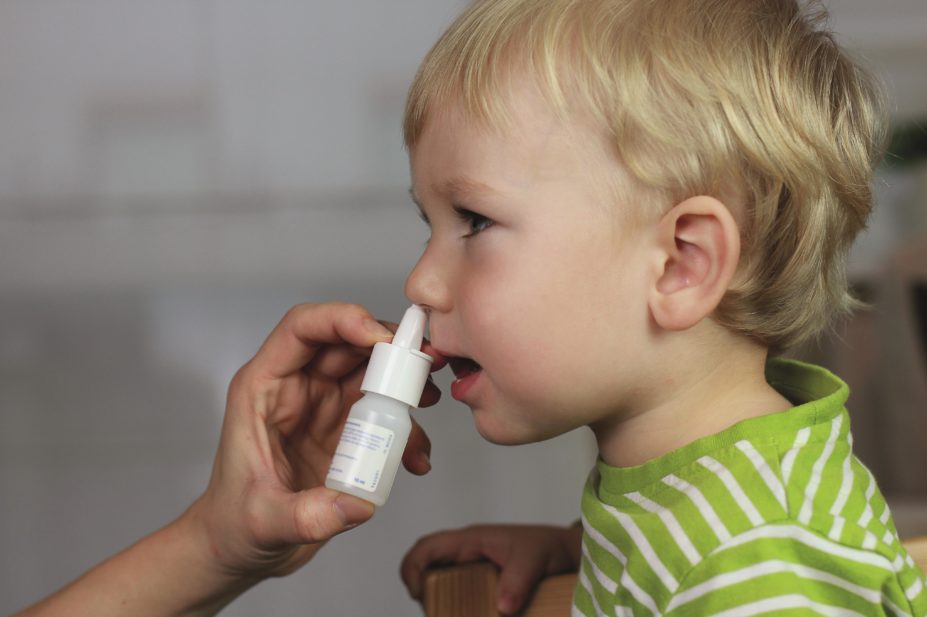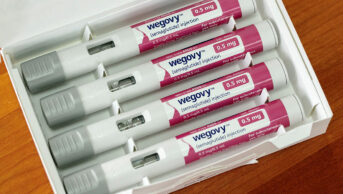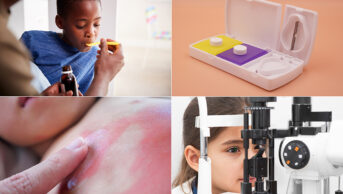
Shutterstock
Researchers have found that a combination intranasal spray containing azelastine hydrochloride and fluticasone propionate produces a significant reduction in symptoms of seasonal allergic rhinitis when children rated their own symptoms, rather than their caregivers.
In contrast, previous studies that primarily relied on caregivers’ assessments had inconsistent and inconclusive findings, the researchers say.
The azelastine hydrochloride and fluticasone propionate spray, marketed in the UK as Dymista (also known as MP-AzeFlu), is only licensed for adults and children aged 12 years or over as its safety and efficacy has not been established in younger age groups.
“This study[1]
is important as for the first time the efficacy of MP-AzeFlu has been shown in children with seasonal allergic rhinitis,” say the researchers in Pediatric Allergy and Immunology (online, 1 March 2016). Children’s and caregivers’ symptom assessments cannot be assumed to be the same, they add.
A total of 348 children aged 4–11 years were randomised to receive either placebo or MP-AzeFlu intranasal spray twice daily for 14 days.
Improvements in quality of life were measured using the Paediatric Rhinitis Quality of Life Questionnaire (PRQLQ), which was assessed by children at the study site. Symptom severity was assessed using the reflective total nasal symptom score (rTNSS, scale 0–12) and the reflective total ocular symptom score (rTOSS, scale 0–9) by either the caregiver or the child.
The researchers found there was a significant improvement in the quality of life scores after two weeks (PRQLQ score, diff: -0.29, 95% confidence interval [CI] -0.55, -0.03; P=0.027), but there was no significant change in rTNSS or rTOSS between the intranasal spray and placebo.
However, when the degree to which children had been involved in rating their own symptoms was taken into account, there was a significant improvement compared to the placebo group. Children ‘self-rating’ their symptoms more than 90% of the time resulted in a reduction on the rTNSS scale of -2.18 points compared with placebo (P=0.002) and a reduction of -1.34 points on the rTOSS scale compared with placebo (P=0.009).
Commenting on the study, Stephen Tomlin, consultant paediatric pharmacist at the Evelina Children’s Hospital in London, says: “This is a well conducted study with important findings for the treatment of allergy in children.
“However, of more significance is the demonstration that direct paediatric generated data is essential in both the research and clinical arena, for the appropriate assessment and treatment of children.”
Tomlin adds that while caregivers help to provide an overall picture of the child’s health and well-being, the child should be consulted whenever possible.
“The study also raises the issue that there are few validated tools for assessment of direct paediatric generated data and it is essential that we work with children to produce and validate appropriate tools,” he says.
References
[1] Berger W, Meltzer EO, Amar N et al. Efficacy of MP-AzeFlu in children with seasonal allergic rhinitis: Importance of paediatric symptom assessment. Pediatric Allergy and Immunology 2016. doi: 10.1111/pai.12540


